What is API Gateway? A Beginner’s Guide to Managing APIs
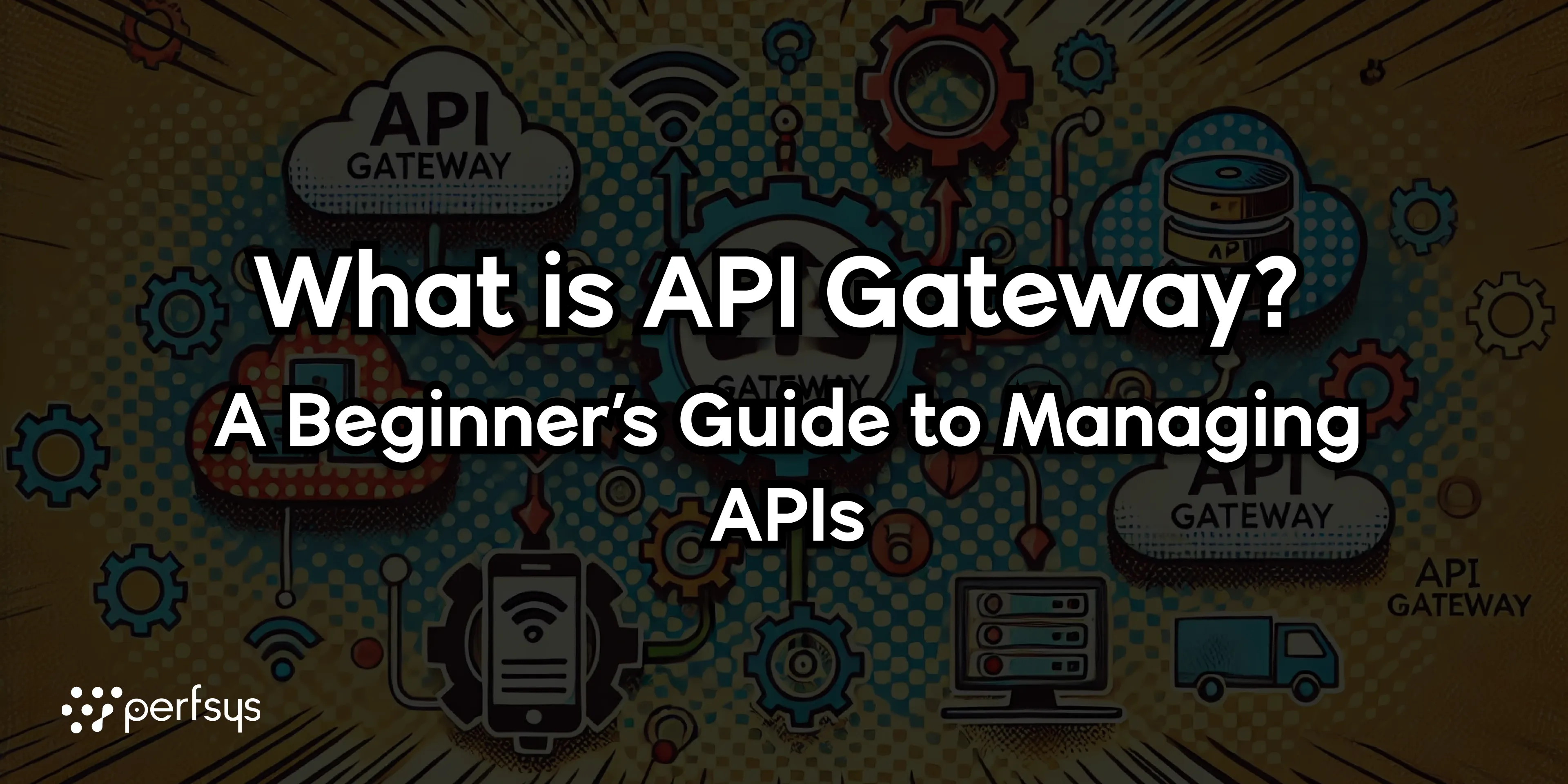
API Gateway is a managed service provided by AWS (and other cloud providers) that allows developers to create, publish, monitor, and secure APIs (Application Programming Interfaces) at any scale.
By acting as a front door for applications, API Gateway manages how different parts of an application connect and interact, enabling secure data exchange between client applications (like mobile or web apps) and backend services.
This guide explains what API Gateway is, how it works, and why it’s useful for applications that need to handle API requests securely and efficiently.
What Does API Gateway Do?
An API Gateway manages API requests between clients (users) and backend services. Think of it as a traffic controller that routes requests, manages authentication, and protects backend services from unauthorized access or excessive traffic.
Key Features of API Gateway:
-
— Routing: Directs client requests to the appropriate backend services.
-
— Security: Controls access with authentication, authorization, and encryption.
-
— Traffic Management: Limits the number of requests and prevents overloading backend services.
-
— Monitoring: Provides real-time monitoring and analytics to track API performance.
-
— Caching: Speeds up responses for frequently requested data, reducing load on backend services.
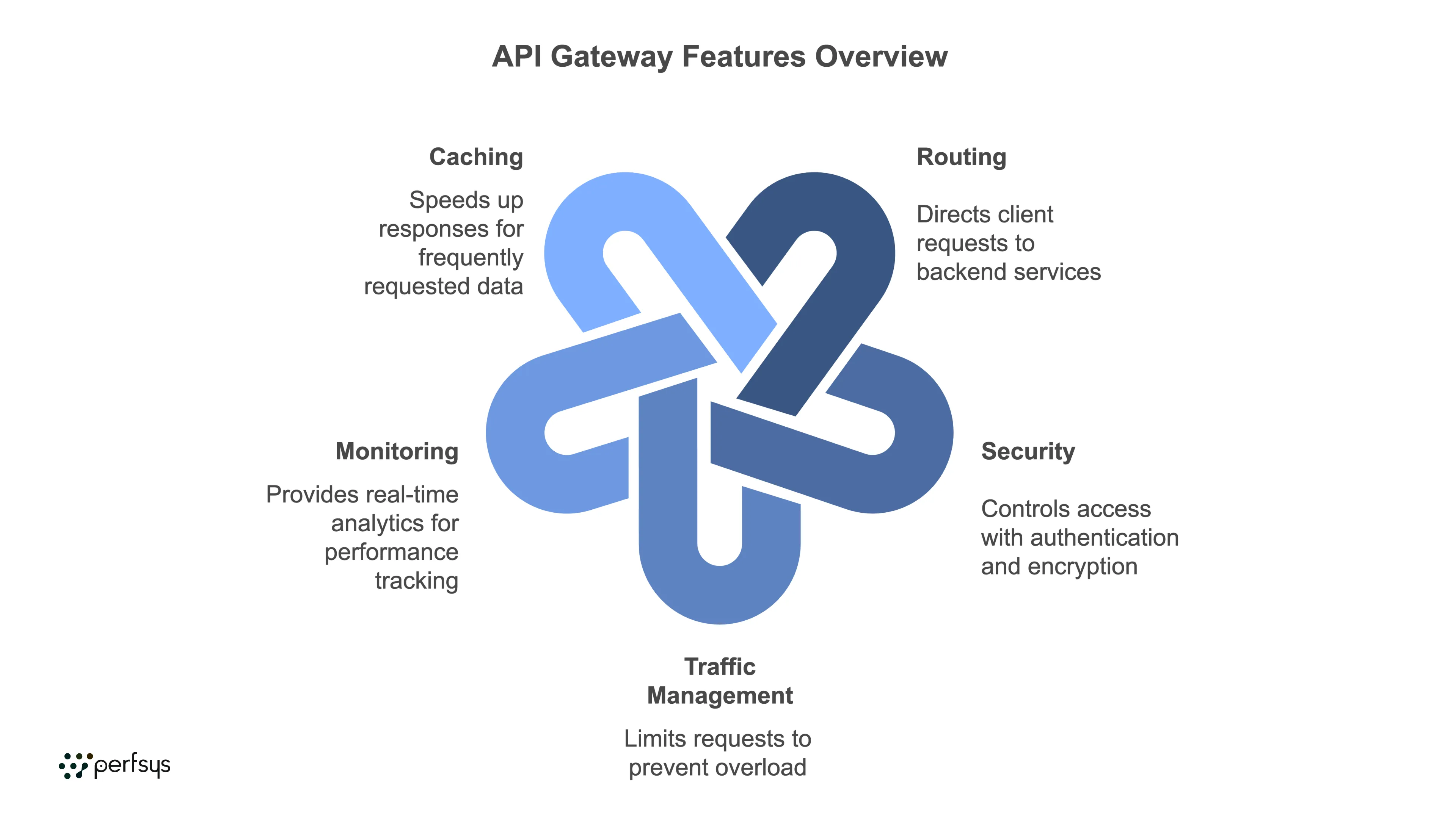
How Does API Gateway Work?
When a client (such as a mobile app or web browser) makes a request to an API:
-
— Request Handling: The request goes through the API Gateway, which checks the request format, validates authentication, and enforces any security or usage policies.
-
— Routing: Based on the API route, the API Gateway forwards the request to the appropriate backend service (e.g., an AWS Lambda function or EC2 instance).
-
— Response Handling: The backend processes the request and sends a response back to the API Gateway, which then returns it to the client.
By centralizing API management, API Gateway reduces the complexity of managing multiple API endpoints and secures them through a single interface.
Key Benefits of Using API Gateway
1. Enhanced Security
API Gateway provides security features like authentication (e.g., API keys, OAuth tokens), encryption, and rate limiting to protect APIs from unauthorized access and DDoS attacks.
2. Simplified API Management
API Gateway allows you to manage multiple APIs in a single interface, making it easier to handle multiple versions, endpoints, and deployment stages (development, testing, and production).
3. Scalability and Reliability
API Gateway automatically scales to handle large numbers of requests, making it reliable even during high-traffic events.
4. Built-In Monitoring and Analytics
With tools like AWS CloudWatch integration, API Gateway provides insights into API performance, error rates, latency, and usage patterns.
5. Caching for Faster Responses
API Gateway can cache responses, reducing backend load and delivering faster responses to frequently requested data.
Common Use Cases for API Gateway
1. Connecting Frontend Applications to Backend Services
- — API Gateway connects mobile apps, websites, and IoT devices to backend services like databases, AWS Lambda functions, or EC2 instances.
2. Microservices Architecture
- — For applications built on microservices, API Gateway provides a single entry point, routing client requests to the appropriate microservices, simplifying management and improving security.
3. Serverless Applications
- — In serverless applications, API Gateway works with AWS Lambda to handle API requests without managing any servers, making it ideal for event-driven and pay-per-use applications.
4. Multi-Version and Multi-Stage API Management
- — API Gateway enables version control and multiple deployment stages (like development, testing, and production), making it easy to update and test new versions of an API without affecting live applications.
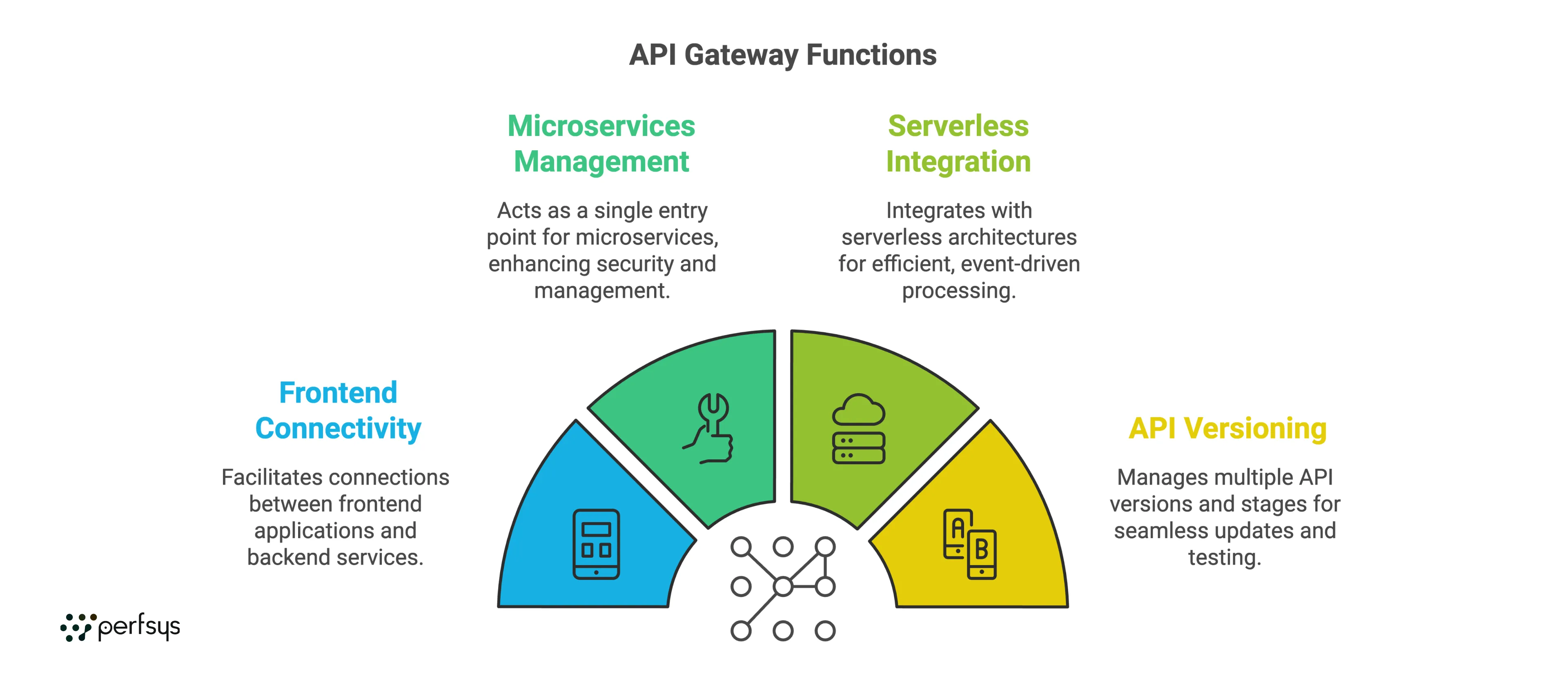
API Gateway Components
1. API Resources and Methods
An API resource represents an entity (like a user or item) accessible via an endpoint, while a method (e.g., GET, POST) defines the action you can perform on it.
2. Stages and Deployments
Stages allow you to deploy different versions of your API (like development, staging, and production) with unique URLs for each stage, making it easy to test new versions.
3. Authorizers
API Gateway can use authorizers like Cognito or Lambda functions to verify users, providing flexible and secure access control.
4. Usage Plans and API Keys
Usage plans and API keys allow you to control access and limit the number of requests made by specific users, which is helpful for public APIs.
5. Throttling and Caching
API Gateway offers throttling to limit request rates and caching to store frequently requested responses, improving efficiency and managing traffic loads.
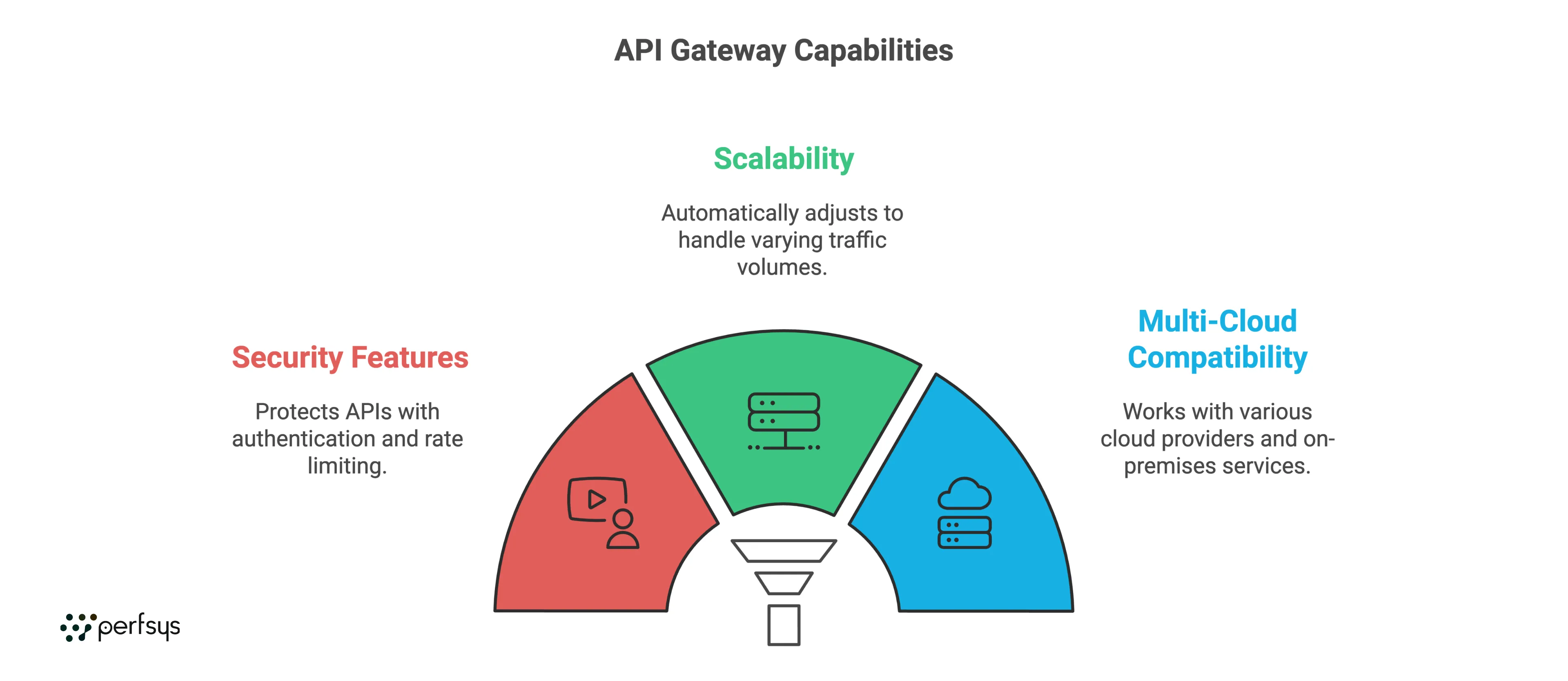
AWS API Gateway Pricing
API Gateway pricing is based on the number of API calls and data transferred out of AWS, with additional costs for optional features like caching. AWS offers two pricing options for API Gateway:
-
— REST API: Charges per million API calls and data transferred.
-
— HTTP API: A cheaper, faster option with fewer features than REST API, suitable for simple, low-latency applications.
Tip: Use the AWS Free Tier to explore API Gateway with 1 million free requests per month for up to 12 months.
Comparison: API Gateway vs. Load Balancer
While both API Gateway and load balancers distribute requests, they serve different purposes:
-
— API Gateway: Manages APIs, providing security, monitoring, and routing at the application layer. Best for APIs needing authentication, rate limiting, and caching.
-
— Load Balancer: Distributes traffic across multiple servers for load management, but doesn’t offer API-specific management features like rate limiting or usage plans.
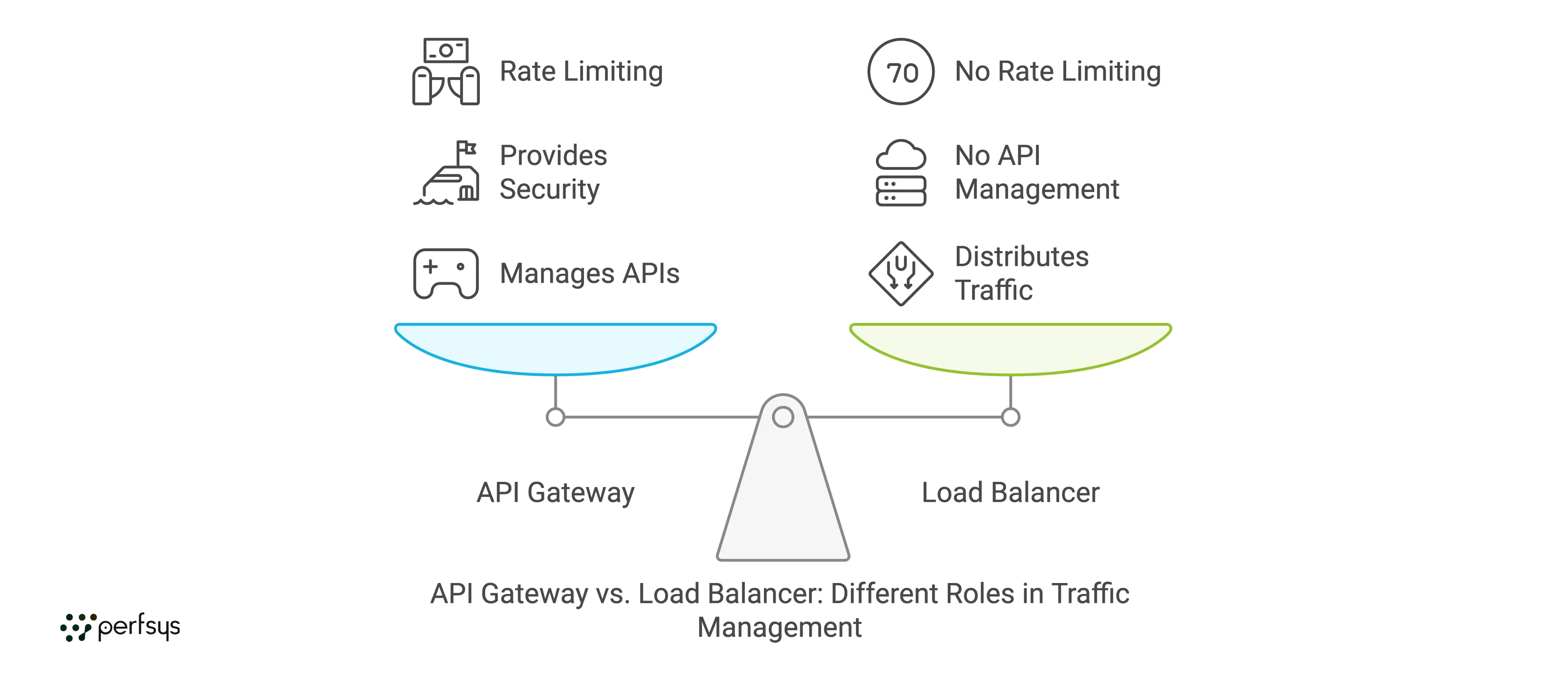
Frequently Asked Questions (FAQ)
1. Do I need an API Gateway for every API?
No, not every API needs an API Gateway. If your API doesn’t require features like rate limiting, authentication, or routing, you might not need it. However, for complex or public APIs, API Gateway adds security and efficiency.
2. Can API Gateway handle high traffic?
Yes, API Gateway automatically scales to handle high request volumes, making it ideal for applications with unpredictable or high traffic.
3. Is API Gateway only for AWS?
AWS offers API Gateway as a managed service, but other cloud providers like Google Cloud and Azure also offer similar API management services.
4. Can I use API Gateway with other backend services, not just AWS?
Yes, API Gateway can route requests to any public HTTP endpoint, including external APIs and on-premises servers.
Conclusion
API Gateway is a powerful tool for managing APIs, providing a single interface to control access, secure data, monitor usage, and scale requests. Whether you’re building microservices, serverless applications, or public-facing APIs, API Gateway simplifies API management, improves security, and optimizes performance.
As digital applications continue to grow, API Gateway makes it easier for developers to manage the complexities of connecting, securing, and scaling APIs across a variety of platforms.
